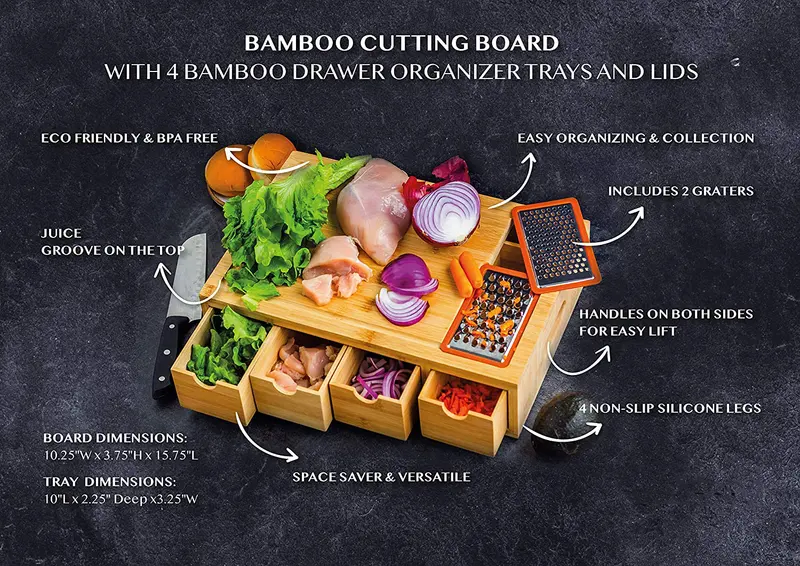A wooden cutting board is a common kitchen utensil typically used for chopping, slicing, and dicing food ingredients. These boards are often crafted from various hardwoods such as oak, olive wood, beech, cherry wood, or maple. Here’s an introduction to wooden cutting boards:
- Material Selection: Wooden cutting boards are commonly made from hardwoods known for their natural antibacterial properties, making them a safe and hygienic choice. Different wood textures and colors allow for personal preference and kitchen decor.
- Knife Protection: Wooden cutting boards are relatively soft, providing a cushion that helps protect knife blades from damage. Compared to harder cutting boards, wooden ones contribute to maintaining sharp knife edges.
- Ease of Cleaning: Wooden cutting boards are relatively easy to clean and can be hand-washed or wiped to remove food residues. However, some wooden boards may not be suitable for dishwasher cleaning.
- Durability: Wooden cutting boards typically have a longer lifespan, especially when properly maintained and treated with periodic oiling or waxing.
- Environmentally Friendly: In comparison to some plastic cutting boards, wooden ones are a more environmentally friendly choice as wood is a renewable resource.
- Board Maintenance: To extend the life of a wooden cutting board, it’s recommended to regularly apply food-grade oil or dedicated cutting board oil to prevent wood from drying out and to maintain a smooth surface.
In summary, wooden cutting boards are a popular kitchen tool with features such as natural aesthetics, knife protection, and relative ease of cleaning. Choosing the right wood type and size based on individual needs and preferences is key.













